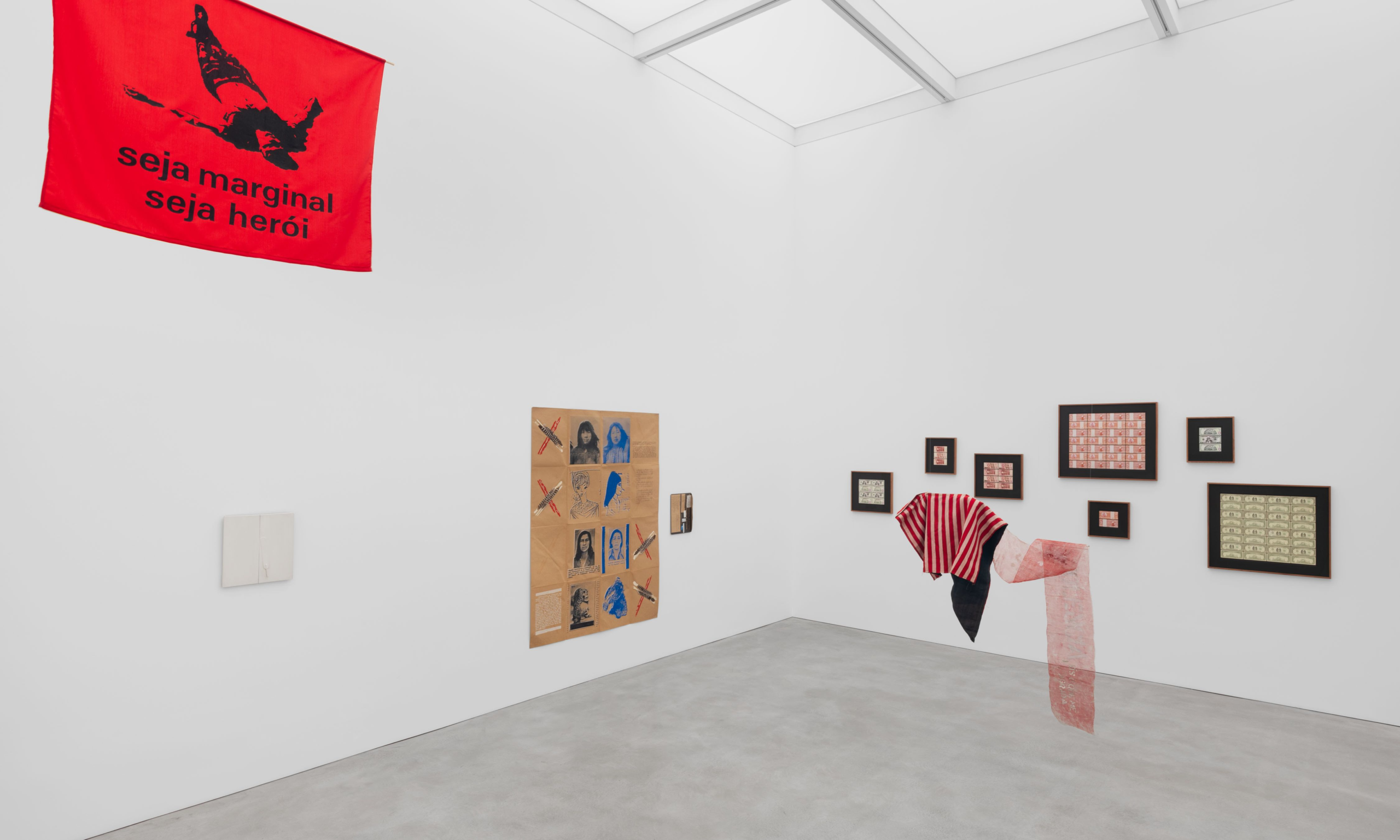Installation view of Angel with a Gun: Homage to Guy Brett at Alison Jacques, London
Courtesy of Alison Jacques Gallery
The late Guy Brett was known better as a critic and curator than a collector. But the pioneering writer, who died in 2021, amassed a trove of work, as revealed by a show at Alison Jacques gallery in London.
Angel with a Gun: Homage to Guy Brett (until 15 June) brings together around 60 works by 12 Latin American artists from the Brett collection. These include the leading Neo Concretists Lygia Clark, Sérgio Camargo and Hélio Oiticica, those who follow in their legacy, like Jac Leirner, and Kinetic Art practitioners like Jesús Rafael Soto and Carlos Cruz-Diez. Prices range from $1.8m for wall-based works by Camargo down to the low five figures.
From early in his career, Brett turned his attention to art from regions unrepresented in the Western discourse at the time—notably, although not exclusively, Latin America. "In the 1960s, when Brett was a critic for the Times, he was posted to Brazil to write about the São Paulo Biennale," says Alison Jacques. "Through Camargo he was introduced to local artists with whom he formed friendships."
Brett would come to play pivotal and enduring roles in many of these artists' lives and careers. These close personal relationships form the basis of both the collection and the show. Not only did Brett write extensively on these figures, many of the artists were exhibited at Brett's London gallery, Signals, which ran from 1964 to 1967, or in later exhibitions he organised.
"More than a particular geography or style, Guy's eye was drawn to vitality in art," Jacques says, adding that a number of the works contain sensory elements. These include a 1965-66 poem box by Oiticica, on whose work Brett organised the only international survey to take place in the artist's lifetime, held in 1969 at the Whitechapel Gallery in London. Other sensory works on show are now too fragile to be handled, such as Oiticica's textile banner work P11 Parangolé Cape 7 (Sex and Violence That's What I Like) (1966), which was originally intended to be worn as a cape.
Lygia Clark's Pocket Bicho (1966)
Courtesy of Alison Jacques Gallery
Around one-third of the show is devoted to work by Clark, whose estate has been represented by Alison Jacques since 2010. She is the only artist in the show on Alison Jacques's roster, although Jacques has dealt in the secondary market of other artists in the exhibition.
Brett was a longstanding patron of Clark, often sending money to support her, as well as buying her work, Jacques says. Their closeness is attested by Clark's Pocket Bicho (1966), a diminutive example from her bicho (critter) series—mutable sculptures made from hinged metal planes that she conceived of as beasts. According to Jacques, Brett wrote to Clark expressing his desire to have a bicho that he could put in his pocket to play with, prompting Clark to make this work. It is offered for $550,000 (plus taxes).
A series of geometric matchbox works by Clark (who was a heavy smoker) are among the large handful of works in the show that have already been promised to Tate, to which around half of the total collection will be donated as a gift.
Asked whether the São Paulo curator Adriano Pedrosa's Global South-focused main exhibition at the Venice Biennale (until 20 November) has heightened interest in the artists on show, Jacques says that Pedrosa's show has "highlighted lesser known artists by placing them among their better known peers". She adds that interest in Latin American art in the UK has been growing since 2012, when more material began emerging on the market. Jacques imagines that the quality and art historical significance of the Brett collection will draw institutional attention.
Indeed, collections of this importance typically go to auction houses, making the decision of Brett's wife, Alejandra, to consign the works to Alison Jacques unorthodox. Jacques suspects that one of the key reasons she was chosen by Alejandra Brett is because her gallery represents the Clark estate.
Alejandra Brett says she consigned the collection to Alison Jacques due to her "past life as a curator and writer, and her specialist knowledge" of Latin American art. "It's about personal chemistry, mutual respect and understanding. It was paramount to find a collaborator who would treasure Guy's legacy with utmost sensitivity and communicate this through an exhibition of the works Guy and I have treasured for decades."

